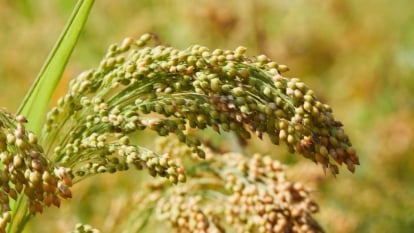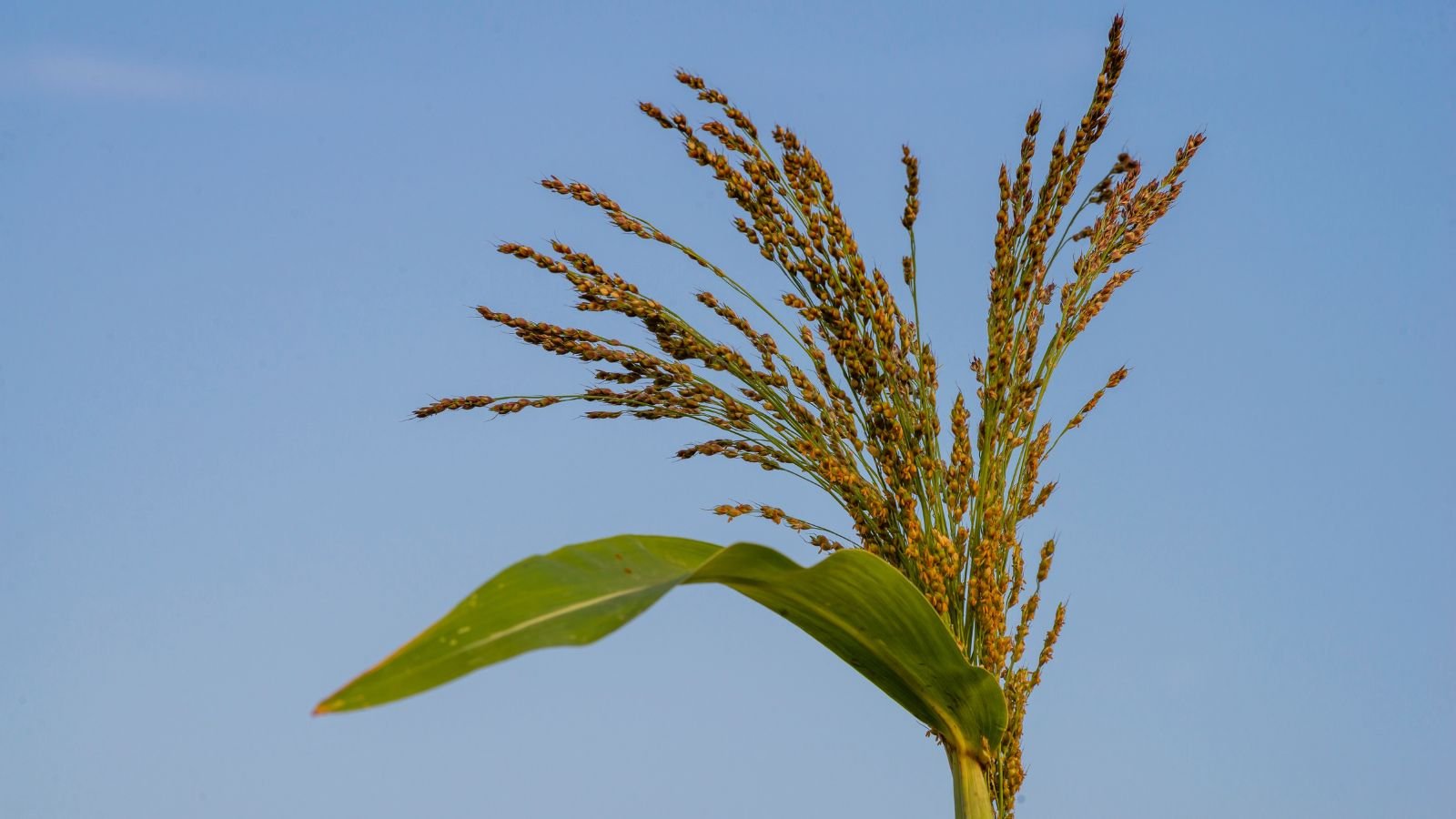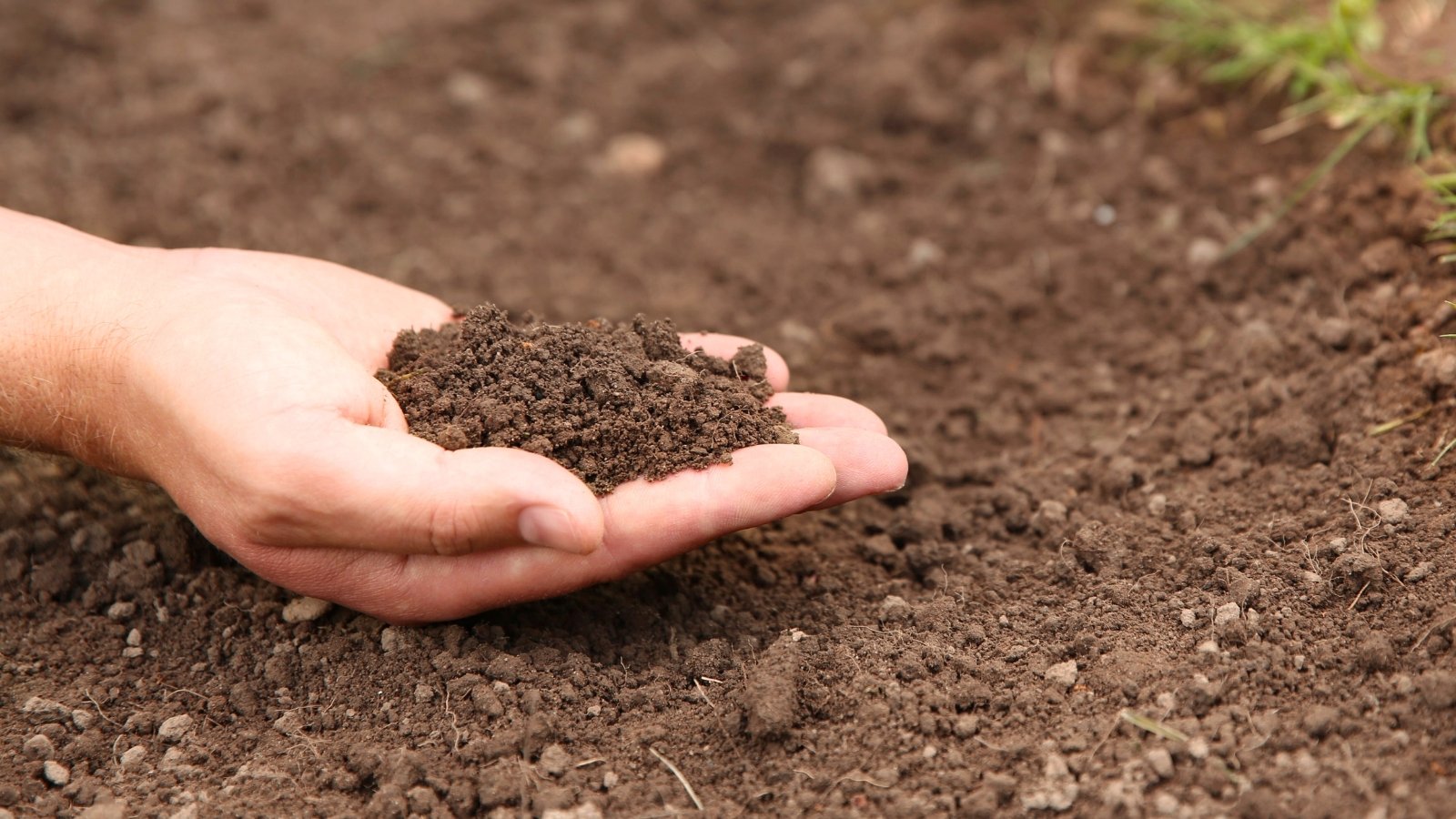The way in which to Plant, Develop, and Take care of Millet
The millet plant might be a sustainable reply to meals insecurity all through the globe. As a crop, millet could also be very climate-resistant. It does not require a great deal of water or very fertile soil, every of which might be on a regular basis in short present anyway. Because of its capability to thrive in harsh climates, it costs decrease than quinoa to provide and makes use of a lot much less water. This low-carbon selection might help feed the rising inhabitants with a lot much less environmental impression than completely different additional commonplace cereal crops.
Together with being comparatively easy and cost-effective to develop, millet is superb for you. This important meals crop may also be gluten-free and whole grain. This nutrient-packed seed provides all nonetheless one essential amino acid wished to make it a complete protein, which is larger than most grains can say. It’s often ample in fiber and antioxidants, and the finger millet may also be an excellent provide of calcium.
Aside from meals for folks, millet may also be a additional sustainable selection for fodder and forage than a couple of of its commonplace alternate choices. In america, millet is additional thought-about as a birdseed selection than meals grain for people – nonetheless that’s progressively altering!
Overview


|
|
|
|
What’s Millet?
Millet is a cereal crop from the Poaceae family, with a seed-like look. Being a part of the grass family, this grassy plant has an prolonged stalk and is often harvested for its small edible seeds. Not like most grain crops that choose it cooler in temperature, millet grows best in hotter local weather, like rice and corn.
Native Area


Completely completely different types of millet originated better than 4,000 years up to now in parts of Asia and Africa. Although the seed is the first attraction, people develop millet for quite a few causes. It’s a excellent cowl crop, good fodder for livestock and domesticated animals, forage for grazing animals, and after harvest season, mixing into your soil for added nutritional vitamins. Some even develop it as an ornamental millet as a consequence of its beautiful purple foliage.
Traits


Inside the gardening world, considerably throughout the US, it isn’t unusual to plant spherical June or July and harvest in mid-October. As quickly as seeds are planted instantly into the soil, they take one to 2 days to germinate, and as quickly because the plant has been established, it begins the tillering course of.
Subsequent, the panicle, or a cluster of flowers, that may kind the seed head begins to develop inside a sheath of leaves. As a result of the plant matures, the highest emerges from the sheath and turns from inexperienced to gold to brown. Millet is often harvested for the easiest yield when the highest has turned a third of one of the simplest ways brown.
Makes use of


As talked about earlier, this historic grain is filled with tons of essential nutritional vitamins. Inside the US, it is typically grown for birdseed. In numerous parts of the world, millet is a crucial factor of the standard specific particular person’s weight reduction plan. Counting on the way in which you set collectively it, it might be utilized in a dish as a grain very similar to rice or quinoa, or if cooked longer with additional liquid, it turns proper right into a porridge.
Millet seeds are typically in multigrain bread; these grains can even be ground down into flour and used to make flatbread and completely different dishes with good dietary price. Millet alone has a barely nutty style nonetheless readily transforms to type like regardless of it is cooked in.
Types of Millet
Whereas utterly completely different millet kinds are comparable in type, they each have distinctive traits that help us understand why they’re so commonplace spherical utterly completely different parts of the world. The various millets talked about below mustn’t an entire itemizing nonetheless highlight a couple of of the additional extensively grown millet species. All the millets talked about proper right here have comparable rising habits!
Proso Millet


Proso (Panicum miliaceum) is actually probably the most commonly-grown millet throughout the US, and solely proso millet is grown as a meals crop proper right here. The seed color of proso millet can vary between white, cream, yellow, orange, crimson, black, and brown. Proso millet is grown throughout the central and northern Good Plains of the US. It is usually thought-about primarily probably the most adaptable of the millets as it might properly develop extra north and is additional tolerant of higher elevations than foxtail or pearl millet.
Foxtail Millet


Foxtail millet (Setaria italica) can be known as Italian, German, or hay millet. That’s the oldest form of millet, and its origins have been traced once more to southeast Asia. It is the second most-produced millet globally and typically primarily probably the most economically useful. Foxtail millet’s significance in world agriculture can’t be overstated. Larger than 90 million people on this planet depend on it as an enormous meals provide. Although foxtail could also be very commonplace in warmth and temperate climates and are important crops in India, it is typically grown as a catch crop for fodder and birdseed mixes throughout the US.
Pearl Millet


Pearl millet (Pennisetum glaucum) is grown primarily as a meals crop in Africa. They’re essential crops in a lot much less fertile agriculture areas in Africa and Southeast Asia because of it reliably produces in poor, droughty, and infertile soils than most completely different sorts of cereal grain. Nonetheless, Pennisetum glaucum is a extraordinarily adaptable crop that grows in fertile soil with additional moisture too. Pearl millet grows best in mild, well-drained loamy or sandy soils.
Pearl millet can be known as cattail millet, and some of its varieties are used as ornamental millet. Normally, ornamental millet grows in beautiful shades of purple, probably the most well-liked amongst these being the ‘Purple Majesty’. Pearl millet may also be the tallest rising millet, with heights ranging from 5 to eight toes, making it the best for ornamental millet. Most completely different millets develop to be about two to 4 toes tall.
Finger Millet


Finger millet (Eleusine coracana) is one different form of millet grown in India and Africa. It was named finger millet as a consequence of its finger-like seed heads. Generally referred to as Ragi in India, that’s an particularly widespread crop utilized in flours, bread, alcoholic drinks, and malts. This important crop is an excellent provide of calcium and, like pearl millet, could also be very drought resistant with the facility to be grown year-round in ample climates.
Fonio
Fonio (Digitaria exilis) is a millet known as acha or hungry rice. With the rising popularity in West Africa, this millet thrives in desert circumstances and is usually planted in sandy or stony soils. Fonio has two utterly completely different species, white and black, with white being the additional commonplace. Fonio is the smallest of the millets, and harvesting is usually additional labor-intensive as a consequence of this.
Planting


After selecting what kind of millet to plant, it is time to put collectively. Develop millet in containers, throughout the ground, or in raised yard beds, with barely numerous planting and care strategies. Till the soil throughout the spring for best outcomes and roll sooner than planting.
Plant properly after the ultimate frost when the soil temperature has reached about 65°F (18°C) and make sure the realm can have the power to get a full day’s value of photo voltaic. Steer clear of planting different types subsequent to 1 one other, as they will cross-pollinate significantly do you have to plan to avoid wasting plenty of seed to sow subsequent 12 months.
When planting, broadcast sow after which calmly pack. Bury the seeds one to a couple inches deep, nonetheless 4 to five inches deep will nonetheless work. Plant two inches aside from each other.
The way in which to Develop Millet
If planted within the applicable location, caring for millets is not going to be an extreme quantity of labor. One among many causes it is so commonplace is that it is a low-maintenance cereal crop that doesn’t need a great deal of consideration or belongings. Following the following pointers will assist you maximize your yield and assure your plant is flourishing.
Gentle


Millet thrives in full photo voltaic. Should you’re rising ornamental millet, guarantee you might have chosen a spot the place they will receive full photo voltaic to indicate that beautiful deep purple color. The additional daylight millet will get, the upper the harvest of grain finally.
Water


Being very drought-tolerant, millet does not need a great deal of water. Proso significantly has the underside water requirement of any grain crop. Millets are a shallow-root crop and extract most of their water from the first three toes of soil. Practically all of its water comes from rainfall all by means of the rising season. Make sure they get one inch of water per week is low rainfall areas.
Allow the soil to dry sooner than watering as soon as extra; millet does not do properly when water-logged. It is best to water with a drip system and water early throughout the day to make sure the millet has time to dry off sooner than night time time when temperatures drop.
Soil


A lot much less is additional when it comes to prime quality soil for millet. In parts of Africa and Asia, when soil circumstances turned too poor to plant rice, farmers would plant millet. Because of it is a crop that produces reasonably shortly, in an applicable native climate, growers might plant it once more to once more as a lot as thrice a 12 months.
Millet does best in well-draining warmth sandy or loamy soils. It prefers a neutral pH fluctuate for optimum improvement. Most importantly, guarantee you shouldn’t planting millet in soil prone to waterlogging.
Temperature


This plant requires a warmth temperature for germination and could also be very frost-sensitive. Plant when soil temperatures attain 65°F (18°C), as that is the minimal temperature that soil must be all by means of the rising season. Temperatures of 40 to 50°F (4-10°C) can severely hinder millet’s improvement to the aim that they might not get properly.
Fertilizing


Millet is usually grown in a lot much less fertile soil, so fertilizing is non-compulsory. Must you do must fertilize millet, specializing in merchandise with a extreme amount of nitrogen, like feather meal, is your most suitable option. This plant will probably be delicate to fertilizer burn, so do not apply on to the seed. Fertilize on the planting time after which as soon as extra 4 weeks later.
Harvesting


When to reap millet all relies upon why it’s being grown. Must you intend to utilize it for forage, harvesting can begin 45-60 days after being planted. To get primarily probably the most nutritious hay, harvest millet on the boot stage, which suggests the highest has developed and grown in dimension nonetheless stays to be enclosed inside its sheath. At this stage, they’re windrowed to maximise yield and prime quality hay.
If harvesting for seed for each meals or as a wildlife planting, the millet plant is often ready 70-90 days after planting. An obvious sign that it’s time to reap is when the very best half of the highest has turned brown, and the lower portion just isn’t inexperienced.
Prepared too prolonged to reap will set off shattering, and you will attainable lose additional seeds this vogue than do you have to had harvested too early. Cut back the seed head off from the rest of the plant with a pair of yard shears and allow heads to dry for numerous days in a cool darkish place. As quickly as they’ve dried, it must be less complicated to separate the seed from the highest by rubbing them off collectively along with your palms. The seed should then as soon as extra be dried for numerous days sooner than storing.
Each seed must be dehulled sooner than human consumption, and techniques vary counting on the form of millet. Execs and pearl millet have merely removable hulls that could be separated by rubbing them off or winnowing them with a fan or breeze. For foxtail millet, the hull is thicker and should be eradicated with a hand mill.
Storage


After millet has been dehulled, it might be ground into flour or saved as is. Retailer total millet in an airtight container in a cool, darkish, dry place. For longer storage, put your container throughout the freezer for per week to kill off any micro organism. Retailer total millet for as a lot as a 12 months, and millet flour for as a lot as six months. While you put together dinner millet, it may ultimate throughout the fridge for 3 to five days.
Frequent Points
Although millet is a low-maintenance crop, it isn’t good. Taking precautions might assist defend your vegetation from pests and sickness. The first step is determining what to be careful for.
Pests


Because of millet seed is usually used to make birdseed mixtures, birds might be a most important downside when rising millet. Birds are acknowledged to eat the millet seed-heads and any planted seeds that haven’t had the prospect to germinate however. Stop birds from consuming newly sown seeds by soaking millet seeds in a single day after which letting them dry out. Seeds germinate faster this vogue, which shortens the window birds have to hunt out and eat them.
As quickly because the crop has been sown, cowl the printed seed with soil so that birds can’t see them. Relying in your scale of producing, masking crops with nets although this is not smart for producing large parts. Make sure to reap millet sooner than its heads start to deteriorate and it’ll lower the number of birds your crop attracts.
In addition to, some bugs are minor pests. Grasshoppers, navy worms, chinch bugs, and false chinch bugs are all one factor to look out for when rising millet. For fall armyworms, spinosad and neem oil are confirmed to be very environment friendly.
Navy worms and grasshoppers can even be dealt with with BT spray, a liquid kind of Bacillus thuringiensis. Chinch bugs will probably be dealt with using pyrethrin or a sprig kind of Beauvaria bassiana, a pure fungus that wipes them out.
Illnesses


Illnesses amongst millet can vary counting on the sort, nonetheless none are terribly prevalent. Some to watch out for are powdery mildew, bacterial blight, head and kernel smut, and leaf spots like alternaria leaf spot.
Powdery mildew responds properly to neem oil remedy, and every powdery mildew and leaf spots will probably be dealt with with copper fungicides. A number of forms of smut and bacterial blight are onerous to take care of; the smut is fungal in origin so may reply to early pre-treatment by means of copper fungicide, nonetheless bacterial illnesses are typically unfold by pests and may be lethal to the plant.
Constantly Requested Questions
Millet plant may be utilized for human meals, to make flour, for birdseed, livestock feed, domesticated animal feed, as a hay crop, forage for grazing, cowl crop, and occasionally, ornamental millet is grown for decorative features.
Annual, its seeds will probably be harvested and planted as soon as extra subsequent 12 months.
It is a form of grass, part of the large family of cereal crops.






